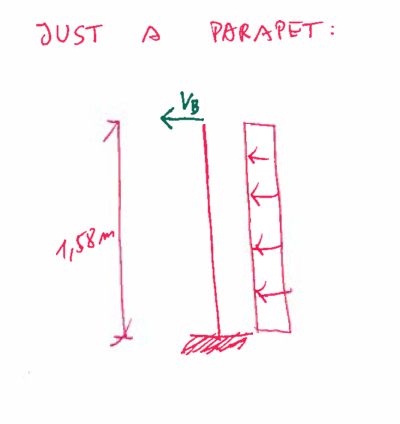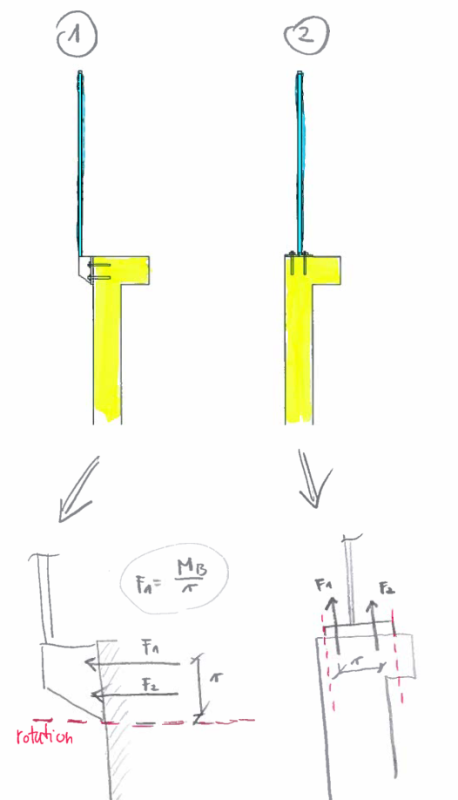gmd255
Structural
- Apr 17, 2017
- 49
Im adding a glass fence on existing RC wall. Wall is thin (150 mm wide and 1580 mm high). Reinforcement in wall is fi8/20 cm. Since Im adding a fence on top, wall will be exposed to additional load from wind forces. So I have to check existing reinforcement (larger moments at the base of the wall).
My question is:
Can i consider a fence as an extension of existing wall when making a model (model A in the picture – cantilever with height of 2,58 m = 1,58 m wall + 1m fence)
Or should I model wall and fence seperatelly (model B) and then add reaction from fence on the top of a wall where fence will be fixed.
Im asking this because I dont know how to take into account tension forces (F1 and F2) from bending moment of a fence (detail 1). Does this mean that actual force on top of a wall is more like VB + F1?
If I fix fence on top of a wall as shown in detail 2 i dont have this problem?
Im confused since I get different results in both cases. In model B existing reinforcement is not sufficient but in model A it is.



My question is:
Can i consider a fence as an extension of existing wall when making a model (model A in the picture – cantilever with height of 2,58 m = 1,58 m wall + 1m fence)
Or should I model wall and fence seperatelly (model B) and then add reaction from fence on the top of a wall where fence will be fixed.
Im asking this because I dont know how to take into account tension forces (F1 and F2) from bending moment of a fence (detail 1). Does this mean that actual force on top of a wall is more like VB + F1?
If I fix fence on top of a wall as shown in detail 2 i dont have this problem?
Im confused since I get different results in both cases. In model B existing reinforcement is not sufficient but in model A it is.




